Query Menu#
When selecting the Query menu, seven options appear. The first four are always available. The last three will be visible only if the user is logged into the web interface
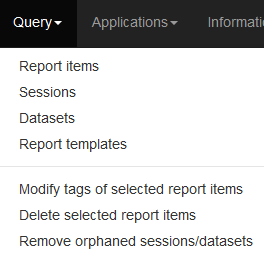
Report items#
When selecting this entry, the following page will appear:
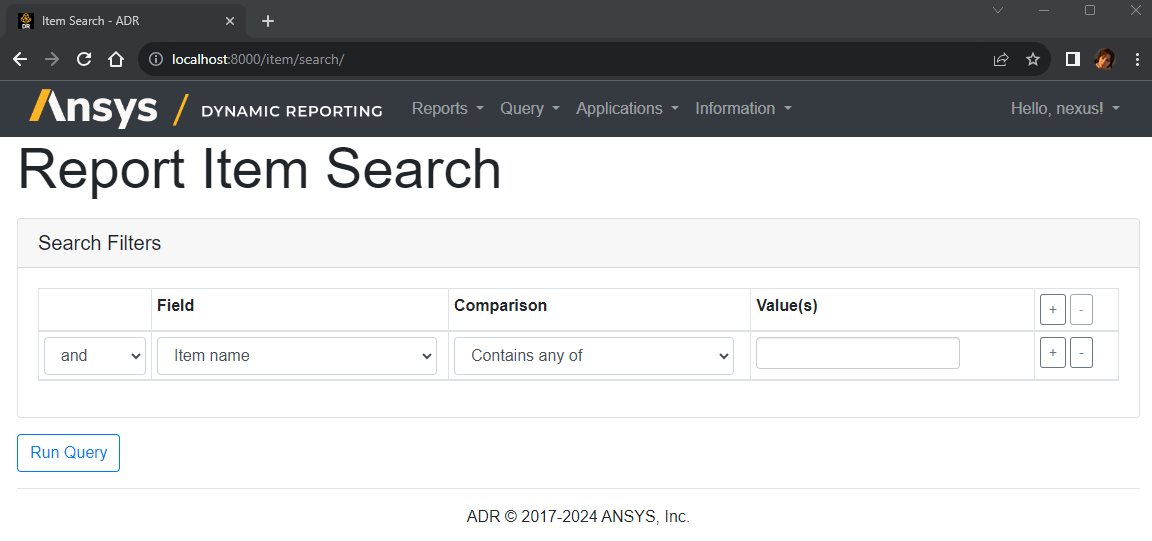
In the Search Filters, enter the query to run against the database to extract the list of items. Then, click on Run Query. The result will display a list of the items that satisfy the query:
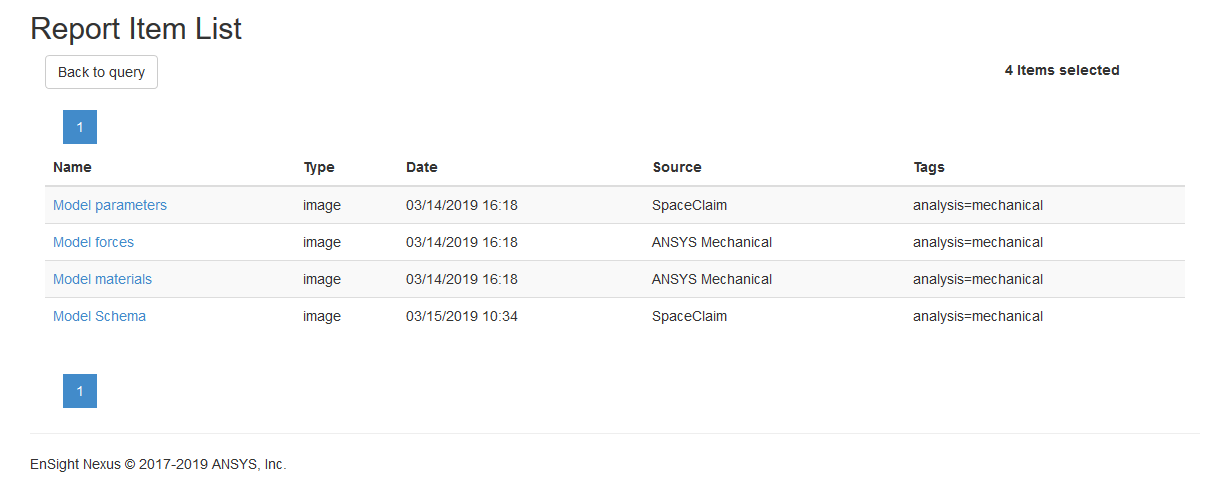
You can click on each one of the items to get more detailed information about that particular item.
Sessions#
As Report Items query, for sessions
Datasets#
As Report Items query, for datasets
Report templates#
As Report Items query, for report templates
Modify tags of selected report items—only for logged-in users#
This menu entry allows a logged-in user to modify the tags on database items. When selecting this entry, the first page that appears is a filtering over the database items:
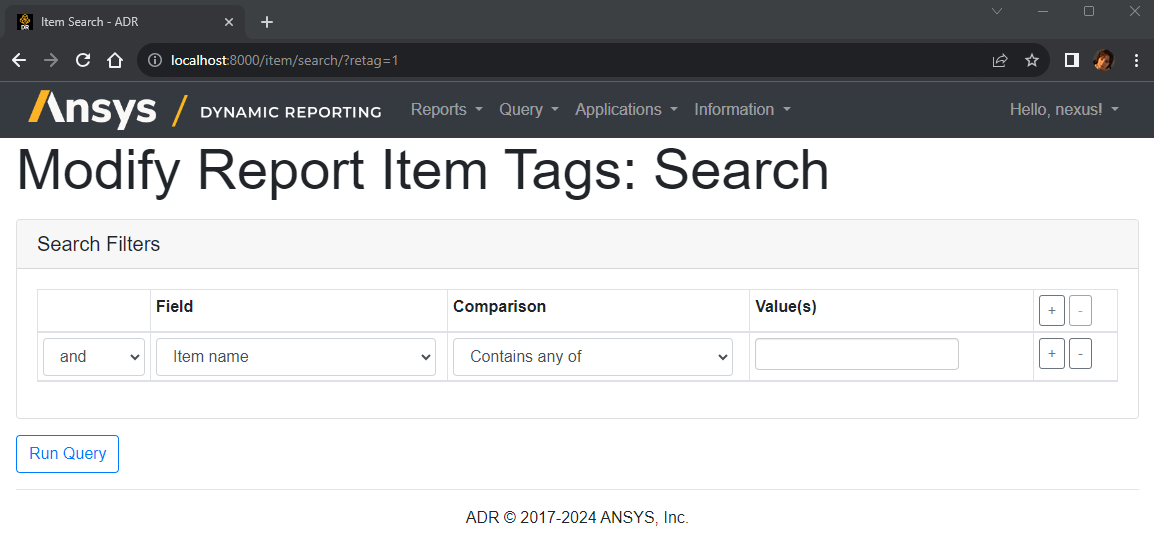
In this page, enter the filters for the query you want to run to extract only the items you want to modify the tags on. This query is the same type of query as presented in the Report Items menu entry. If you want to modify the tags on all the items in the database, leave the fields empty and click on Run Query.
This will present a new page with the list of the items that meet the query criteria. Multiple tags on each item are separated by spaces:
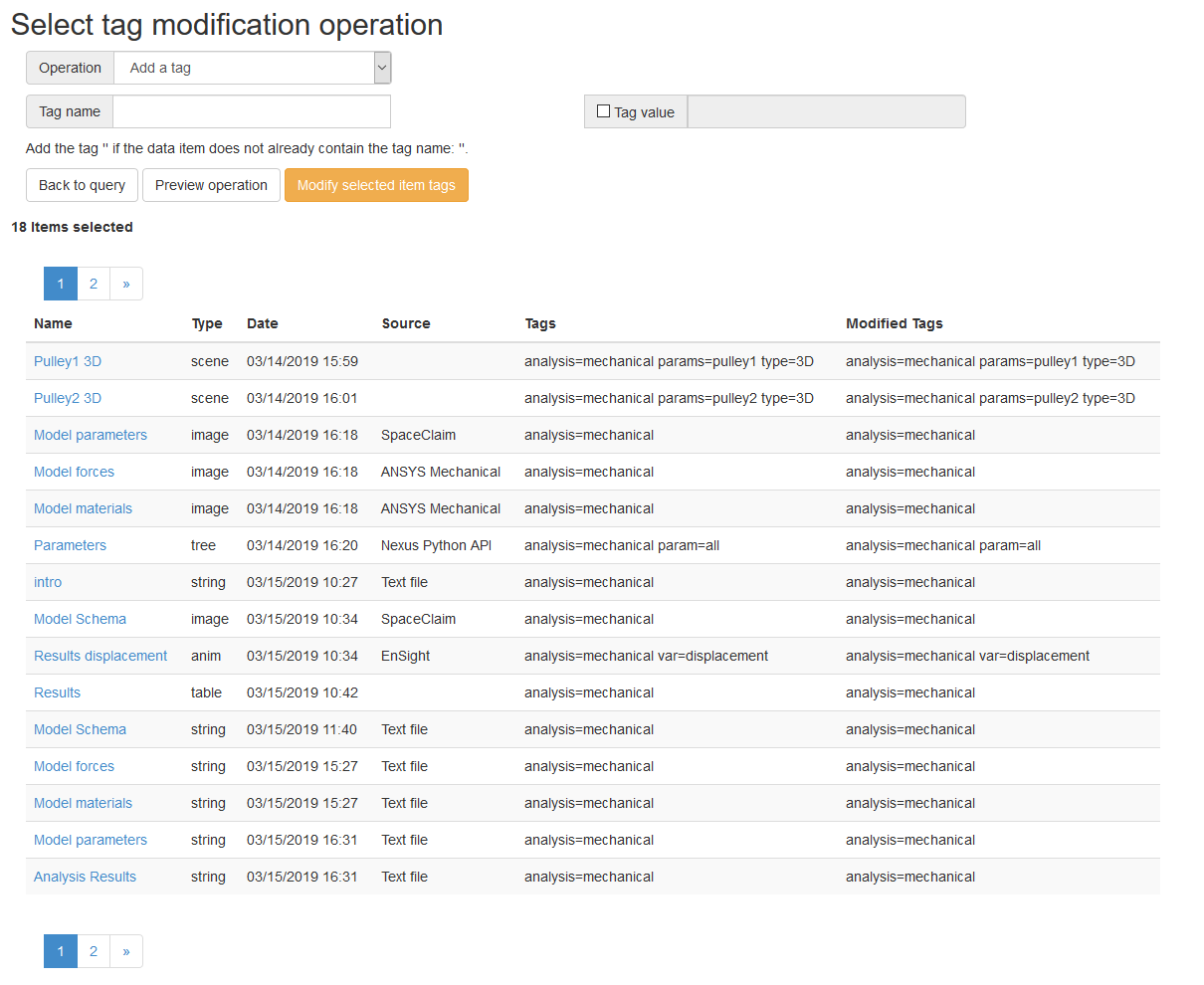
At the top of the page, you can choose which tag operation you want to perform. There are three options:
1. Add a tag. With this operation, you can add a new tag to the items in the list. The tag will be added only if it does not already exist.
2. Remove a tag. This operation allows the user to remove a tag. If "Tag value" is toggled on and a value is entered, then only tags with that particular value will be removed. Example. In this database, we have an item with tag: params=pulley1 and an other item with tag: params=pulley2

Let's say we want to remove all tags for params=, regardless of its value. Then, select the operation Remove a tag, set the Tag name to "params" and do not toggle on Tag value. This will remove all tags "params" regardless of their value.
Let's say we want to remove only params=pulley1 but not params=pulley2. In this case, select the operation Remove a tag, set the Tag name to "params", and toggle on the Tag value. In this field, enter "pulley1". This will remove only params=pulley1, but not the params=pulley2 tag.
3. Replace a tag. This operation allows the user to replace an existing tag with an other one.
For example, let's say that in the items above the user wants to change the tag "analysis=mechanical" to be "analysis=Mech". The user would select the operation "Replace a tag", then enter as Tag name "analysis" and as Tag value "Mech". This operation will take all the tags "analysis=*" regardless of their value, and replace them with "analysis=Mech".
Every time you edit the Operation and its fields, the string that describes what your settings are going to do automatically updates. You can use this string to get a better understanding of what changes you are actually about to commit:
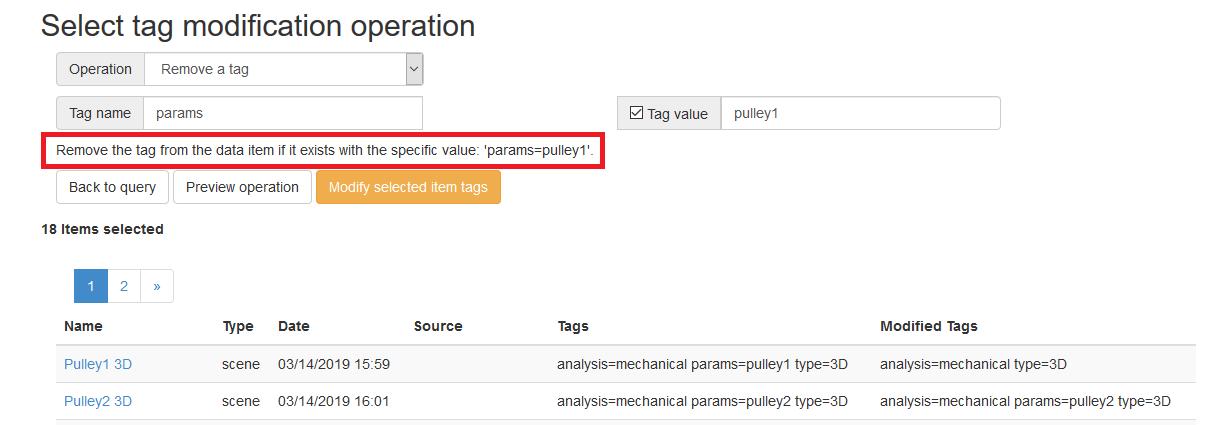
Note that the list of items has two columns for tags: the first one presents the current tags, and the second one shows the "Modified Tags". These are the tags that would appear as a result of the Operation you have set. The user can use this second column to visualize how the tags would be modified by before actually committing the tag changes. Click on the "Preview operation" button to refresh the Modified Tags column.
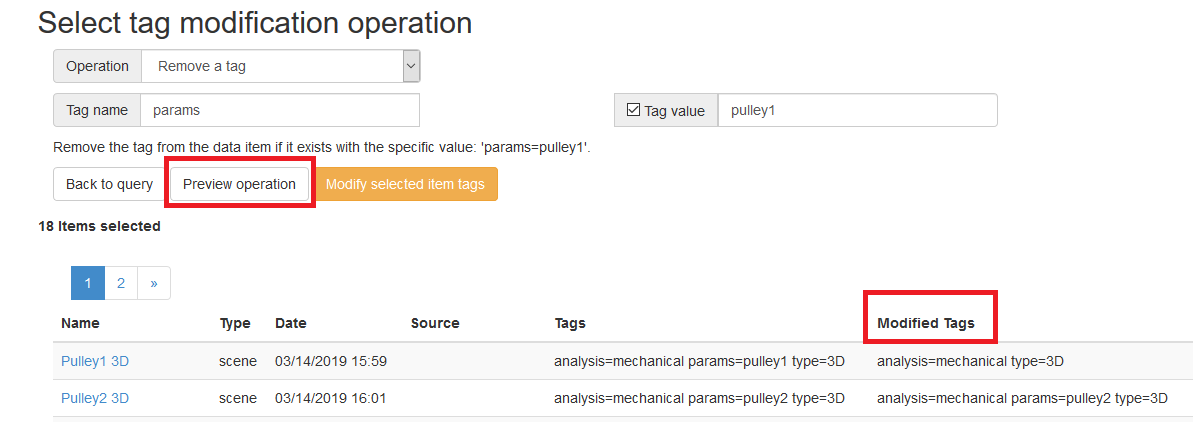
If you are satisfied with the changes, click on the "Modify selected item tags" button to commit these changes. Note that there is no ability to undo tag modifications.
Delete selected report items - only for logged in users#
This menu entries allows a logged in user to delete items from the database. The user is first presented with a page with a query to run against the database. Then, the user can delete the items resulting from this query
Removed orphaned sessions/datasets - only for logged in users#
This menu entry will automatically detect sessions and datasets in the database that have no items associated to them, and delete them. This can be needed to clean up the database after the user has pushed and deleted items manually, leaving guids for sessions and datasets lying around.